
JLPT N5 Kanji List - All 112 Characters You Need To Know
Share
Below we've listed all 112 JLPT N5 level kanji along with their English meaning, readings, and two accompanying vocabulary words using the kanji.
But Wait, What's JLPT N5?
The Japanese Language Proficiency Test (JLPT) is the gold standard of Japanese language proficiency, recognized worldwide. As the first significant milestone in this journey, the JLPT N5 test is your ticket to showcasing your growing command of the language. By mastering the JLPT N5 kanji, you'll have a solid foundation to engage with basic Japanese texts and conversations.
In JLPT N5, kanji holds its own. The test assesses your ability to understand and use the kanji in various contexts. Moreover, understanding kanji opens up a world of vocabulary, boosting your reading comprehension and communication skills.
How Many Kanji For JLPT N5?
You'll be disappointed, but there's no official answer. The JLPT official organizers do not say how many kanji will be in the test, or which ones. But usually, it's around 80 to 100 kanji.
In our JLPT N5 Kanji list below, we've included 112 kanji characters. Why 112 and not 80 or 100? Well, as we mentioned the JLPT doesn't mention which kanji will be included. Some kanji can be included in a year, not in the next one. And vice-versa.
With 112 kanji, you should be covered for all eventualities.
All kanjis included in the list are beginner-level, and you will find them in a lot of very common vocabulary words. Actually after learning all these 112 kanji, you should be able to read around 30% of all Japanese texts!
How to Read Kanji: Onyomi and Kunyomi Readings
Learning the meaning of each kanji is a first step, but you need to learn their readings if you want to be able to... well, read. Each kanji character has two types of readings: Onyomi (Chinese-based) and Kunyomi (Japanese-based).
1. Onyomi reading
Onyomi refers to the Chinese-based readings of kanji characters. These readings were adopted from the original Chinese pronunciations when the characters were introduced to Japan. Onyomi readings are used when kanji appear together.
Example:
- 休日 --> 休 is read きゅう, and 日 is read じつ --> きゅうじつ = holiday
- 電車 --> 電 is read でん, and 車 is read しゃ --> でんしゃ = train
2. Kunyomi reading
Kunyomi refers to the native Japanese readings of kanji characters. These readings are used when kanji characters appear on their own (or with hiragana).
In the Kunyomi column in the table below, the hiragana characters in brackets stay as hiragana, whereas the rest of the word is usually written in kanji.
Example:
- ひと(つ) --> 一つ = one thing
- た(べる) --> 食べる = to eat
Tips for Kanji Memorization
We're not going to lie... Learning kanji will take time. But it's doable. Repetition and consistency are key when learning kanji. Here are some helpful tips:
- Consistent Practice: Make kanji practice a daily habit. The more you see and use these characters, the more they will stick. Use something like our N5 Kanji poster to keep them in front of your eyes and easily review them throughout the day.

- Flashcards: Flashcards are great to test your memorization of kanji meanings and readings. We recommend Wanikani.
- Writing Practice: Nowadays with technology all around us, learning how to write kanji is not an obligation anymore. But writing kanji by hand can help solidify your memory. You can find cheap kanji writing notebooks with a nice design on Amazon.
The Ultimate JLPT N5 Kanji List
Finally, what you've been waiting for. Here are the 112 kanji you need to learn for the JLPT N5.
We've arranged the kanji list by category, making it easier to group and remember characters with related meanings.
Plus, we've included Onyomi and Kunyomi readings along with vocabulary for each character to give you a well-rounded understanding:
Kanji related to Numbers
| Kanji | Meaning | Onyomi | Kunyomi | Vocabulary |
|---|---|---|---|---|
| 一 | One | いち ichi |
ひと(つ) hito(tsu) |
一人 hitori (one person, alone) |
| 二 | Two | に ni |
ふた(つ) futa(tsu) |
二人 futari (two people) |
| 三 | Three | さん san |
み(っつ) mi(ttsu) |
三日 mikka (3rd day of the month) |
| 四 | Four | し shi |
よ(っつ), よん yo(ttsu), yon |
四日 yokka (4th day of the month) |
| 五 | Five | ご go |
いつ(つ) itsu(tsu) |
五日 itsuka (5th day of the month) |
| 六 | Six | ろく roku |
む(っつ)、むい mu(ttsu), mui |
六日 muika (6th day of the month) |
| 七 | Seven | しち shichi |
なな(つ), なな nana(tsu), nana |
七日 nanoka (7th day of the month) |
| 八 | Eight | はち hachi |
や(っつ), よう ya(ttsu), you |
八日 youka (8th day of the month) |
| 九 | Nine | きゅう, く kyuu, ku |
ここの(つ) kokono(tsu) |
九日 kokonoka (9th day of the month) |
| 十 | Ten | じゅう juu |
とう, とお tou, too |
十日 tooka (10th day of the month) |
| 百 | Hundred | ひゃく hyaku |
— | 百円 hyakuen (100 yen) |
| 千 | Thousand | せん sen |
ち chi |
千円、千葉県 senen, chibaken (1,000 yen), (Chiba prefecture) |
| 万 | Ten thousand | まん man |
— | 一万円、万年筆 ichimanen, mannenpitsu (10,000 yen), (fountain pen) |
| 億 | Hundred-million | おく oku |
ー | 一億円 ichiokuen (100,000,000 yen) |
Kanji related to Time
| Kanji | Meaning | Onyomi | Kunyomi | Vocabulary |
|---|---|---|---|---|
| 日 | Day, sun | にち, じつ nichi, jitsu |
ひ, か hi, ka |
日曜日、休日 nichiyoubi, kyuujitsu (Sunday), (holiday) |
| 週 | Week | しゅう shuu |
— | 来週、週末 raishuu, shuumatsu (next week), (weekend) |
| 月 | Month, moon | げつ, がつ getsu, gatsu |
つき tsuki |
月、月曜日 tsuki, getsuyoubi (moon), (Monday) |
| 年 | Year | ねん nen |
とし toshi |
今年、去年 kotoshi, kyonen (this year), (last year) |
| 時 | Time, hour | じ ji |
とき toki |
何時、時々 nanji, tokidoki (what time), (sometimes) |
| 間 | Interval | かん kan |
あいだ, ま aida, ma |
時間 jikan (time) |
| 分 | Minute, part, understand | ぶん, ふん, ぶ bun, fun, bu |
わ(かる) wa(karu) |
2分、 自分、 分かる nifun, jibun, wakaru (two minutes), (oneself), (to understand) |
| 午 | Noon | ご go |
ご | 午前 gozen (morning, A.M.) |
| 前 | Before | ぜん zen |
まえ mae |
前回、駅前 zenkai, ekimae (last time), (front of the station) |
| 後 | After | ご, こう go, kou |
あと, うし ato, ushi |
後で、後ろ atode, ushiro (after), (behind) |
| 今 | Now | こん kon |
いま ima |
今回、今 konkai, ima (this time), (now) |
| 先 | Previous | せん sen |
さき saki |
先週、先生 senshuu, sensei (last week), (teacher) |
| 来 | Next, come | らい rai |
く(る) ku(ru) |
来月、来る raigetsu, kuru (next month), (to come) |
| 毎 | Every | まい mai |
ごと goto |
毎日 mainichi (every day) |
Kanji related to People, Places, & Things
| Kanji | Meaning | Onyomi | Kunyomi | Vocabulary |
|---|---|---|---|---|
| 人 | Person | じん, にん jin, nin |
ひと hito |
アメリカ人、外人 amerikajin, gaijin (American person), (foreigner) |
| 男 | Man | だん, なん dan, nan |
おとこ otoko |
男の子、男性 otokonoko, dansei (boy), (male) |
| 女 | Woman | じょ jo |
おんな onna |
女の子、女性 onnanoko, josei (girl), (female) |
| 子 | Child | し shi |
こ ko |
子供、菓子屋 kodomo, kashiya (child), (kashiya) |
| 母 | Mother | ぼ bo |
はは haha |
母 haha (mother) |
| 父 | Father | ふ fu |
ちち chichi |
父 chichi (father) |
| 友 | Friend | ゆう yuu |
とも tomo |
友達 tomodachi (friend) |
| 本 | Book, Origin | ほん hon |
もと moto |
日本、本当 nihon, hontou (Japan), (reality) |
| 気 | Spirit | き ki |
— | 元気 genki (lively, fine) |
| 生 | Life | せい, しょう sei, shou |
い(きる), う(まれる) i(kiru), u(mareru) |
生徒、生きる seito, ikiru (pupil), (to live) |
| 車 | Car | しゃ sha |
くるま kuruma |
車、電車 kuruma, densha (car), (train) |
| 語 | Language | ご go |
かた(る) kata(ru) |
英語、日本語 eigo, nihongo (English), (Japanese) |
| 耳 | Ear | じ ji |
みみ mimi |
耳 mimi (ear) |
| 手 | Hand | しゅ shu |
て te |
手紙、選手 tegami, senshu (letter), (athlete) |
| 足 | Foot | そく soku |
あし、た(す) ashi, ta(su) |
足 ashi (foot) |
| 目 | Eye | もく moku |
め me |
目 me (eye) |
| 口 | Mouth | こう kou |
くち kuchi |
入り口 iriguchi (entrance) |
| 店 | Shop | てん ten |
みせ mise |
喫茶店 kissaten (coffee shop) |
| 駅 | Station | えき eki |
— | 駅弁 ekiben (station bento) |
| 道 | Street | どう dou |
みち michi |
道、道具 michi, dougu (road), (tool) |
| 国 | Country | こく koku |
くに kuni |
国、外国 kuni, gaikoku (country), (foreign) |
| 学 | Study | がく gaku |
まな(ぶ) mana(bu) |
大学、学ぶ daigaku, manabu (university), (to learn) |
| 校 | School | こう kou |
— | 学校 gakkou (school) |
| 名 | Name | めい, みょう mei, myou |
な na |
名前 namae (name) |
| 円 | Yen, circle | えん en |
まる(い) maru(i) |
円い marui (round) |
| 半 | Half | はん han |
なか(ば) naka(ba) |
半分 hanbun (half) |
| 全 | All | ぜん zen |
まった(く), すべて matta(ku), sube(te) |
全然、全く zenzen, mattaku (completely, not at all), (really) |
| 何 | What | か ka |
なん, なに nan, nani |
何、何日 nani, nannichi (what), (what day) |
Kanji related to Nature & Directions
| Kanji | Meaning | Onyomi | Kunyomi | Vocabulary |
|---|---|---|---|---|
| 火 | Fire | か ka |
ひ hi |
火、火曜日 hi, kayoubi (fire), (Tuesday) |
| 水 | Water | すい sui |
みず mizu |
水、水曜日 mizu, suiyoubi (water), (Wednesday) |
| 木 | Tree | もく moku |
き ki |
木、木曜日 ki, mokuyoubi (tree), (Thursday) |
| 金 | Money, gold | きん kin |
かね kane |
金、金曜日 kane, kinyoubi (money), (Friday) |
| 土 | Earth | ど, to | つち tsuchi |
土地、土曜日 tochi, doyoubi (land), (Saturday) |
| 海 | Sea | かい kai |
うみ umi |
海、海外 umi, kaigai (sea), (overseas) |
| 川 | River | せん sen |
かわ kawa |
川 kawa (river) |
| 山 | Mountain | さん san |
やま yama |
山、富士山 yama, fujisan (mountain), (Mt Fuji) |
| 花 | Flower | か ka |
はな hana |
花火、花粉症 hanabi, kafunshou (fireworks), (hay fever) |
| 天 | Heaven | てん ten |
あめ, あま ame, ama |
天気 tenki (weather) |
| 空 | Sky, empty | くう kuu |
そら, あける sora, a(keru) |
空、空港 sora, kuukou (sky), (airport) |
| 晴 | Sunny | せい sei |
は(れ) ha(re) |
晴れ hare (sunny) |
| 雨 | Rain | う u |
あめ ame |
雨 ame (rain) |
| 雪 | Snow | せつ setsu |
ゆき yuki |
雪 yuki (snow) |
| 雲 | Cloud | うん un |
くも kumo |
曇り kumori (cloudy) |
| 風 | Wind | ふう fuu |
かぜ kaze |
風、台風 kaze, taifuu (wind), (taiphoon) |
| 電 | Electricity | でん den |
— | 電気 denki (electricity) |
| 外 | Outside | がい gai |
そと,はず(れる) soto, hazu(reru) |
外、外国 soto, gaikoku (outside), (foreign country) |
| 内 | Inside | ない nai |
うち uchi |
内、車内 uchi, shanai (inside), (inside the car/train) |
| 上 | Above | じょう jou |
うえ, あ(げる) ue, a(geru) |
上、上手 ue, jouzu (above), (good at) |
| 下 | Below | か, げ ka, ge |
した、く(だる) shita, ku(daru) |
下、下さい shita, kudasai (below), (please) |
| 右 | Right | ゆう yuu |
みぎ migi |
右 migi (right) |
| 左 | Left | さ sa |
ひだり hidari |
左 hidari (left) |
| 中 | Middle | ちゅう, じゅう chuu, juu |
なか naka |
中、中学校 naka, chuugakkou (middle, in), (junior high school) |
| 北 | North | ほく | きた kita |
北 kita (north) |
| 西 | West | せい, さい sei, sai |
にし nishi |
西 nishi (west) |
| 東 | East | とう tou |
ひがし higashi |
東、東京 higashi, toukyou (East), (Tokyo) |
| 南 | South | なん nan |
みなみ minami |
南 minami (south) |
Kanji related to Verbs
| Kanji | Meaning | Onyomi | Kunyomi | Vocabulary |
|---|---|---|---|---|
| 見 | See | けん ken |
み(る) mi(ru) |
見る、見せる miru, miseru (to see), (to show) |
| 聞 | Hear | もん, ぶん mon, bun |
き(く) ki(ku) |
聞く kiku (to listen, to hear) |
| 書 | Write | しょ jo |
か(く) ka(ku) |
書く、辞書 kaku, jisho (to write), (dictionary) |
| 言 | Say | げん gen |
い(う) i(u) |
言う iu (to say) |
| 話 | Talk | わ wa |
はなし, はな(す) hanashi, hana(su) |
話す、電話 hanasu, denwa (to talk), (telephone) |
| 読 | Read | どく doku |
よ(む) yo(mu) |
読む yomu (to read) |
| 行 | Go | こう kou |
い(く), おこな(う) i(ku), okona(u) |
行く、銀行 iku, ginkou (to go), (bank) |
| 買 | Buy | ばい bai |
か(う) ka(u) |
買う、買い物 kau, kaimono (to buy), (shopping) |
| 出 | Exit | しゅつ shuu |
で(る), だ(す) de(ru), da(su) |
出る、出口 deru, deguchi (to exit), (exit) |
| 入 | Enter, put in | にゅう nyuu |
はい(る), い(れる) hai(ru), i(reru) |
入る、立ち入り禁止 (to enter), (no entry) |
| 食 | Eat | しょく shoku |
た(べる) ta(beru) |
食べる、食事 taberu, shokuji (to eat), (meal) |
| 飲 | Drink | いん in |
の(む) no(mu) |
飲む、飲み物 nomu, nomimono (to drink), (beverage) |
| 休 | Rest | きゅう kyuu |
やす(む), やす(み) yasu(mu), yasu(mi) |
休む、休日 yasumu, kyuujitsu (to rest), (holiday) |
| 会 | Meet | かい kai |
あ(う) a(u) |
会う、会社 au, kaisha (to meet), (company) |
Kanji related to Adjectives
| Kanji | Meaning | Onyomi | Kunyomi | Vocabulary |
|---|---|---|---|---|
| 多 | A lot | た ta |
おお(い) oo(i) |
多い、多分 ooi, tabun (many), (probably) |
| 少 | A little | しょう shou |
すこ(し), すく(ない) suko(shi), suku(nai) |
少し sukoshi (a little) |
| 古 | Old | こ ko |
ふる(い) furu(i) |
古い furui (old) |
| 新 | New | しん shin |
あたら(しい) atara(shii) |
新しい、新聞 atarashii, shinbun (new), (newspaper) |
| 大 | Big | だい, たい dai, tai |
おお(きい) oo(kii) |
大きい、大変 ookii, taihen (big), (very, terribly) |
| 小 | Small | しょう shou |
ちい(さい)、こ chii(sai), ko |
小さい chiisai (small) |
| 長 | Long, leader | ちょう chou |
なが(い) naga(i) |
長い、部長 nagai, buchou (long), (manager) |
| 短 | Short | たん tan |
みじか(い) mijika(i) |
短い mijikai (short) |
| 遠 | Far | えん en |
とお(い) too(i) |
遠い tooi (far) |
| 近 | Near | きん, こん kin, kon |
ちか(い) chika(i) |
近い、近く chikai, chikaku (close), (near) |
| 白 | White | はく haku |
しろ, しろ(い) shiro, shiro(i) |
白い、面白い shiroi, omoshiroi (white), (interesting) |
| 黒 | Black | こく koku |
くろ、くろ(い) kuro, kuro(i) |
黒、真っ黒 kuro, makkuro (black), (pitch black) |
| 高 | Expensive, high | こう kou |
たか(い) taka(i) |
高い takai (expensive, tall) |
| 安 | Cheap, safety | あん an |
やす(い) yasu(i) |
安い、安心 yasui, anshin (cheap), (relief) |
So there you have it, the complete list of JLPT N5 kanji. Remember, learning kanji is difficult, for sure. But it's also very rewarding. You'll see yourself being to read more and more materials, like manga in Japanese. What was gibberish before will slowly start to make sense and become natural. So don't give up, be consistent, use the resources at hand like our N5 Kanji Poster, and happy studying!
Read also:
Related Posts
-
![この・その・あの・どの – Using ‘This / That / Which’ with Nouns in Japanese [JLPT N5]](//hirakan.com/cdn/shop/articles/acd351ada3fe4b04ae86de788a3350b8.jpg?v=1766305268&width=170)
この・その・あの・どの – Using ‘This / That / Which’ with Nouns in Japanese [JLPT N5]
Quick Summary Meaning: この (kono), その (sono), あの (ano), どの (dono) mean “this / that / which” when they come dire...
-
![これ・それ・あれ・どれ – Saying ‘This / That / Which One’ in Japanese [JLPT N5]](//hirakan.com/cdn/shop/articles/this-that.jpg?v=1766305107&width=170)
これ・それ・あれ・どれ – Saying ‘This / That / Which One’ in Japanese [JLPT N5]
Quick Summary Meaning: これ (kore), それ (sore), あれ (are), and どれ (dore) all mean “this / that / which (one)” when you ar...
-
![か~か – Expressing Choices like “A or B” in Japanese [JLPT N5]](//hirakan.com/cdn/shop/articles/choices.jpg?v=1766304827&width=170)
か~か – Expressing Choices like “A or B” in Japanese [JLPT N5]
Quick Summary Meaning: The pattern か~か shows a simple choice: “A or B.” How to Use: Put か after each optio...
-
![~から~まで – Saying “From A to B” in Japanese [JLPT N5]](//hirakan.com/cdn/shop/articles/from-AtoB.jpg?v=1765093560&width=170)
~から~まで – Saying “From A to B” in Japanese [JLPT N5]
Quick Summary Meaning: ~から~まで shows the starting point and ending point of something: “from A to B.” It is ofte...
-
![まで – Expressing “Until” and “Up To” in Japanese [JLPT N5]](//hirakan.com/cdn/shop/articles/until-up-to.jpg?v=1765093405&width=170)
まで – Expressing “Until” and “Up To” in Japanese [JLPT N5]
Quick Summary Meaning: まで (made) means “until” or “up to” and shows a limit of time, place, number, or even act...
-
![から – Expressing “Because” and “From/Since” in Japanese [JLPT N5]](//hirakan.com/cdn/shop/articles/because-from_since.jpg?v=1765093285&width=170)
から – Expressing “Because” and “From/Since” in Japanese [JLPT N5]
Quick Summary Meaning: から shows a reason (“because”) or a starting point (“from / since”). How to Use: Put...
-
![や – Listing Examples with “And, Among Others” in Japanese [JLPT N5]](//hirakan.com/cdn/shop/articles/and.jpg?v=1765093138&width=170)
や – Listing Examples with “And, Among Others” in Japanese [JLPT N5]
Quick Summary Meaning: や connects two or more nouns and means “and” or “among other things.” It shows that your lis...
-
![か – Forming Questions and Saying “Or” in Japanese [JLPT N5]](//hirakan.com/cdn/shop/articles/ka-questions.jpg?v=1763787134&width=170)
か – Forming Questions and Saying “Or” in Japanese [JLPT N5]
Quick Summary Meaning: The particle か turns a sentence into a question, or can mean “or” when choosing between thin...
-
![も – Saying “Also” and “Too” in Japanese [JLPT N5]](//hirakan.com/cdn/shop/articles/mo-also-too_99f908e6-78d0-4f82-8319-391ef42764bc.jpg?v=1763787251&width=170)
も – Saying “Also” and “Too” in Japanese [JLPT N5]
Quick Summary Meaning: The particle も means “also,” “too,” or “even.” It shows that something is the same as someth...
-
![と – Linking 'And', 'With', and Quotations in Japanese [JLPT N5]](//hirakan.com/cdn/shop/articles/to-and-with-quotation.jpg?v=1763265110&width=170)
と – Linking 'And', 'With', and Quotations in Japanese [JLPT N5]
Quick Summary Meaning: と links things like “A and B,” marks doing something with someone, and shows a quotation (“…,”...
-
![で – Marking Where and How an Action Happens in Japanese [JLPT N5]](//hirakan.com/cdn/shop/articles/de-where-how-action-happens.jpg?v=1763264973&width=170)
で – Marking Where and How an Action Happens in Japanese [JLPT N5]
Quick Summary Meaning: で marks the location where an action happens or the means/tool/method used to do something...
-
![へ – Marking Direction ‘Toward’ in Japanese [JLPT N5]](//hirakan.com/cdn/shop/articles/he-marking-direction.jpg?v=1762667986&width=170)
へ – Marking Direction ‘Toward’ in Japanese [JLPT N5]
Quick Summary Meaning: The particle へ marks direction or “toward” a place or person. It points where something is hea...
-
![に – Marking Time, Destinations, and Recipients in Japanese [JLPT N5]](//hirakan.com/cdn/shop/articles/ni-marking-destination.jpg?v=1762667846&width=170)
に – Marking Time, Destinations, and Recipients in Japanese [JLPT N5]
Quick Summary Meaning: The particle に marks a point in time (at/on), a destination you reach (to/into), or a target/r...
-
![の – Possession and Noun Linking in Japanese [JLPT N5]](//hirakan.com/cdn/shop/articles/no-possession-and-noun-linking.jpg?v=1761961297&width=170)
の – Possession and Noun Linking in Japanese [JLPT N5]
Quick Summary Meaning: Links two nouns to show possession, belonging, or description. Often reads as “’s” or “of....
-
![を – Marking the Direct Object in Japanese [JLPT N5]](//hirakan.com/cdn/shop/articles/o-direct-object.jpg?v=1761960990&width=170)
を – Marking the Direct Object in Japanese [JLPT N5]
Quick Summary Meaning: を marks the direct object — the thing that receives the action of a verb. It’s pronounced ...
-
![が – Marking the Subject ('Who/What') in Japanese [JLPT N5]](//hirakan.com/cdn/shop/articles/ga-subject-marker_60f30f70-6ca5-47ee-9a00-3646195d7d3c.jpg?v=1761386355&width=170)
が – Marking the Subject ('Who/What') in Japanese [JLPT N5]
Quick Summary Meaning: The particle が marks the subject of a sentence and highlights new or focused information (an...
-
![は (wa) – Topic Marker and Contrast in Japanese [JLPT N5]](//hirakan.com/cdn/shop/articles/wa-topic-marker.jpg?v=1761385996&width=170)
は (wa) – Topic Marker and Contrast in Japanese [JLPT N5]
Quick Summary Meaning: Marks the topic of the sentence — what you’re talking about. Often feels like “as for...” in E...
-
![じゃない・ではありません – Expressing 'Is/Was Not' in Japanese [JLPT N5]](//hirakan.com/cdn/shop/articles/janai-dehaarimasen_2594963b-531e-4f4d-a9b0-361010e0a720.jpg?v=1760865884&width=170)
じゃない・ではありません – Expressing 'Is/Was Not' in Japanese [JLPT N5]
Quick Summary Meaning: The negative of the copula “to be.” Say “is not” or “was not” with nouns and na-adjectives. Ho...
-
![だ・です/だった・でした – Saying ‘to be’ in Japanese [JLPT N5]](//hirakan.com/cdn/shop/articles/da-desu-datta-deshita_58bbc732-53fd-48da-83c7-4e477e7cc0b2.jpg?v=1760864506&width=170)
だ・です/だった・でした – Saying ‘to be’ in Japanese [JLPT N5]
Quick Summary Meaning: The Japanese copula — the basic “to be.” It links a topic to a noun or a na-adjective to state...
-
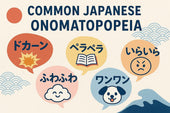
Common Japanese Onomatopoeia: Essential Words You’ll Hear Everywhere
If you spend any time in Japan, you’ll hear onomatopoeia everywhere: on TV, in everyday conversations, in manga, and ...
-
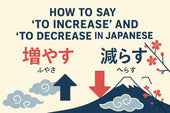
How to Say “To Increase” and “To Decrease” in Japanese: With Examples
You've noticed there are multiple ways to say “to increase” or "to decrease" in Japanese. Between transitive and intr...
-
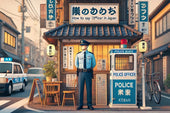
How to Say "Police Officer" in Japanese: Common Terms and Slang
There are several ways to say "police officer" in Japanese, and each one has a different level of formality and usage...
-
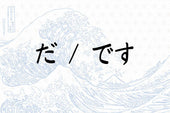
Understanding だ (da) and です (desu) in Japanese: Meaning and Usage
When learning Japanese, one of the first things you’ll come across is だ (da) and です (desu). These words don’t have a ...
-
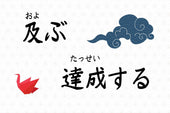
Difference Between 及ぶ (およぶ) and 達成する (たっせいする)
Both 及ぶ and 達成する can relate to "reaching" or "achieving" something, but they have distinct nuances and usage contexts...
-

JLPT N5 Study Guide: A Beginner's Roadmap to Acing the Test
If you’ve just started learning Japanese and are aiming to ace the JLPT N5, you’ll need a solid study guide to help y...
-

Beginner's Guide to Japanese Particles: Learn the Basics
TL;DR: Japanese particles are crucial for structuring sentences, acting like conjunctions or prepositions in English...
-

JLPT N5 Vocabulary List - All 748 Words You Need to Know
Vocabulary is the foundation of any language, and Japanese is no exception. The more you know, the better. Over time ...
-
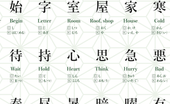
JLPT N4 Kanij List - All 176 Characters You Need To Know
After mastering the JLPT N5 kanji, you're ready to take your Japanese kanji game to the next level. JLPT N4. Let's go...
-
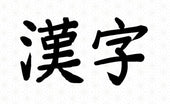
Kanji For Kanji - 漢字
Inception time. Which kanji compose the kanji of "kanji"? The kanji for "kanji" is actually pretty straightforward. I...
-

How to Memorize Katakana Easily: 9 Tips for Beginners
For those diving into Japanese, mastering hiragana and katakana is the first significant challenge. While hiragana o...
-
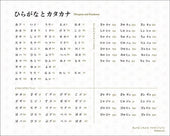
Complete Hiragana and Katakana Chart With All 112 Characters
The very first step for everybody who wants to learn Japanese is to study the hiragana and katakana chart (before lea...
-
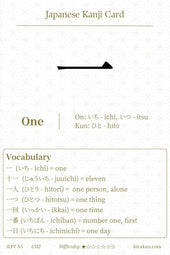
JLPT N5 Kanji: Kanji For One 一 (ichi)
Probably one the most simple kanji to remember, the kanji for 'one' is simply written '一'. Let's see its readings and...
-
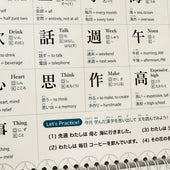
How Long Does It Take to Learn Kanji? A Beginner's Guide
Ask any Japanese student what's the scariest part of learning the language, and they'll say kanji. And they're righ...
-
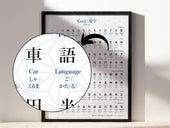
Is it Necessary to Learn Kanji? The Last Answer You'll Ever Need
Many beginners in Japanese wonder whether they should really learn kanji. I know this, because I also wondered when s...
-

How Long Does it Take to Learn Hiragana and Katakana?
As a beginner in Japanese, your first step is diving into the alphabets of Hiragana and Katakana. These are the build...
-

13 Best YouTube Channels to Learn Japanese, From Beginner to Intermediate
YouTube can be an incredible resource for learning Japanese. And best of all, it's free. So we've compiled a list of ...
-
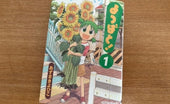
Top 10 Manga for Japanese Language Learners: From Beginners to Intermediates!
If you're learning Japanese, chances are you're interested in manga. So instead of reading texts about Tanaka-san s...
-
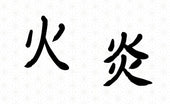
Kanji for 'Fire' in Japanese: 火 or 炎?
Welcome to our enlightening exploration of Japanese kanji! Today, we're igniting our understanding of a primal force ...
-
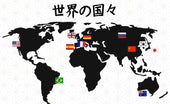
The Complete Guide to Country Names in Japanese: Say and Pronounce Them Right!
Whether you're planning a trip, learning Japanese, or just curious about how different countries are represented in a...
-
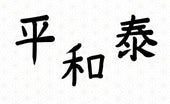
Kanji for Peace: 平, 和, 泰 - The Symbols of Harmony
You might be wondering what are the Japanese symbols for 'Peace'. In this article, we're diving deep into this univer...
-
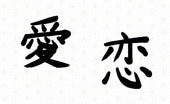
Kanji for 'Love': How and When to Use 愛 and 恋
Welcome to our journey into the world of Japanese kanji! Today, we're delving into one of the most heartwarming and p...
-
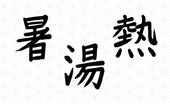
Kanji for 'Hot' in Japanese: 暑, 湯, and 熱 - A Comprehensive Guide
Welcome to our journey into the world of Japanese kanji! Today, we're going to delve into an exciting and essential c...
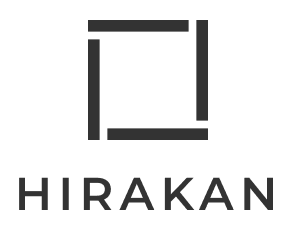
![この・その・あの・どの – Using ‘This / That / Which’ with Nouns in Japanese [JLPT N5]](http://hirakan.com/cdn/shop/articles/acd351ada3fe4b04ae86de788a3350b8.jpg?v=1766305268&width=170)
![これ・それ・あれ・どれ – Saying ‘This / That / Which One’ in Japanese [JLPT N5]](http://hirakan.com/cdn/shop/articles/this-that.jpg?v=1766305107&width=170)
![か~か – Expressing Choices like “A or B” in Japanese [JLPT N5]](http://hirakan.com/cdn/shop/articles/choices.jpg?v=1766304827&width=170)
![~から~まで – Saying “From A to B” in Japanese [JLPT N5]](http://hirakan.com/cdn/shop/articles/from-AtoB.jpg?v=1765093560&width=170)
![まで – Expressing “Until” and “Up To” in Japanese [JLPT N5]](http://hirakan.com/cdn/shop/articles/until-up-to.jpg?v=1765093405&width=170)
![から – Expressing “Because” and “From/Since” in Japanese [JLPT N5]](http://hirakan.com/cdn/shop/articles/because-from_since.jpg?v=1765093285&width=170)
![や – Listing Examples with “And, Among Others” in Japanese [JLPT N5]](http://hirakan.com/cdn/shop/articles/and.jpg?v=1765093138&width=170)
![か – Forming Questions and Saying “Or” in Japanese [JLPT N5]](http://hirakan.com/cdn/shop/articles/ka-questions.jpg?v=1763787134&width=170)
![も – Saying “Also” and “Too” in Japanese [JLPT N5]](http://hirakan.com/cdn/shop/articles/mo-also-too_99f908e6-78d0-4f82-8319-391ef42764bc.jpg?v=1763787251&width=170)
![と – Linking 'And', 'With', and Quotations in Japanese [JLPT N5]](http://hirakan.com/cdn/shop/articles/to-and-with-quotation.jpg?v=1763265110&width=170)
![で – Marking Where and How an Action Happens in Japanese [JLPT N5]](http://hirakan.com/cdn/shop/articles/de-where-how-action-happens.jpg?v=1763264973&width=170)
![へ – Marking Direction ‘Toward’ in Japanese [JLPT N5]](http://hirakan.com/cdn/shop/articles/he-marking-direction.jpg?v=1762667986&width=170)
![に – Marking Time, Destinations, and Recipients in Japanese [JLPT N5]](http://hirakan.com/cdn/shop/articles/ni-marking-destination.jpg?v=1762667846&width=170)
![の – Possession and Noun Linking in Japanese [JLPT N5]](http://hirakan.com/cdn/shop/articles/no-possession-and-noun-linking.jpg?v=1761961297&width=170)
![を – Marking the Direct Object in Japanese [JLPT N5]](http://hirakan.com/cdn/shop/articles/o-direct-object.jpg?v=1761960990&width=170)
![が – Marking the Subject ('Who/What') in Japanese [JLPT N5]](http://hirakan.com/cdn/shop/articles/ga-subject-marker_60f30f70-6ca5-47ee-9a00-3646195d7d3c.jpg?v=1761386355&width=170)
![は (wa) – Topic Marker and Contrast in Japanese [JLPT N5]](http://hirakan.com/cdn/shop/articles/wa-topic-marker.jpg?v=1761385996&width=170)
![じゃない・ではありません – Expressing 'Is/Was Not' in Japanese [JLPT N5]](http://hirakan.com/cdn/shop/articles/janai-dehaarimasen_2594963b-531e-4f4d-a9b0-361010e0a720.jpg?v=1760865884&width=170)
![だ・です/だった・でした – Saying ‘to be’ in Japanese [JLPT N5]](http://hirakan.com/cdn/shop/articles/da-desu-datta-deshita_58bbc732-53fd-48da-83c7-4e477e7cc0b2.jpg?v=1760864506&width=170)






















